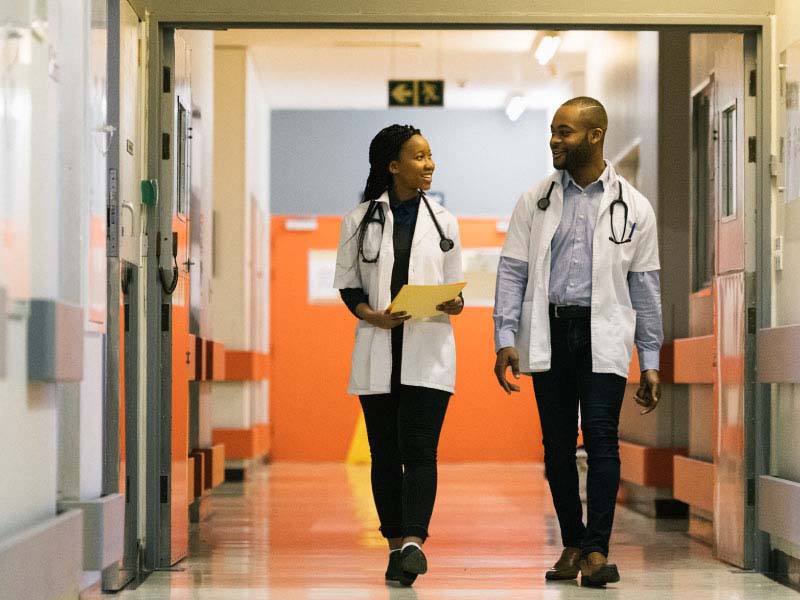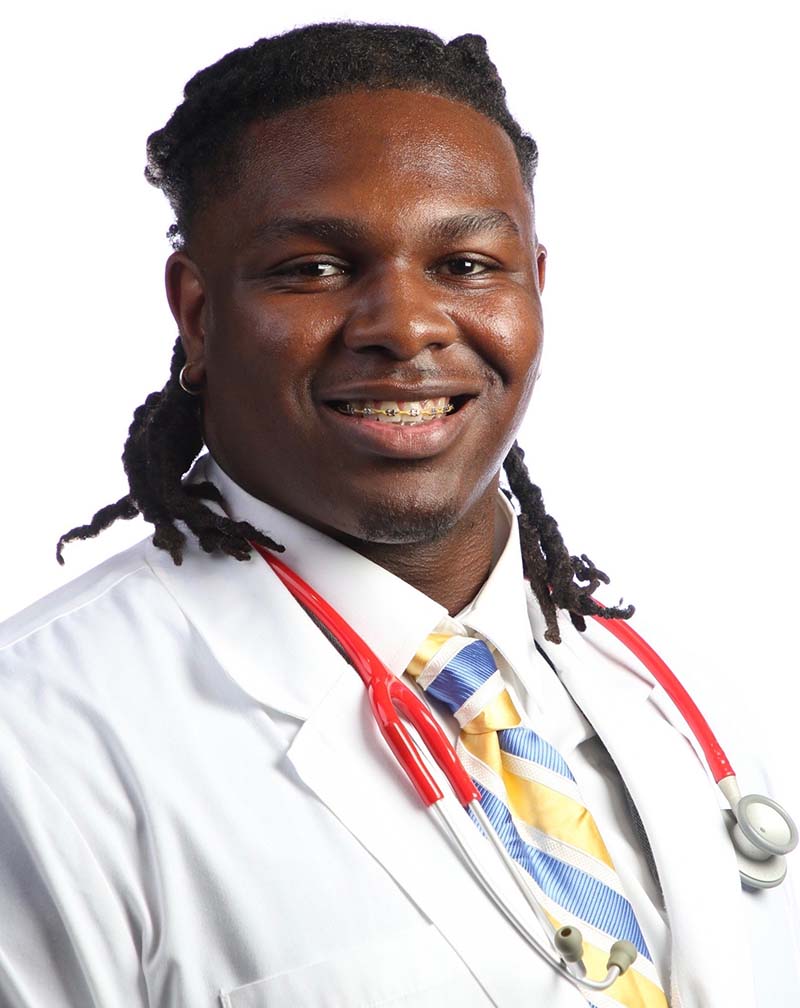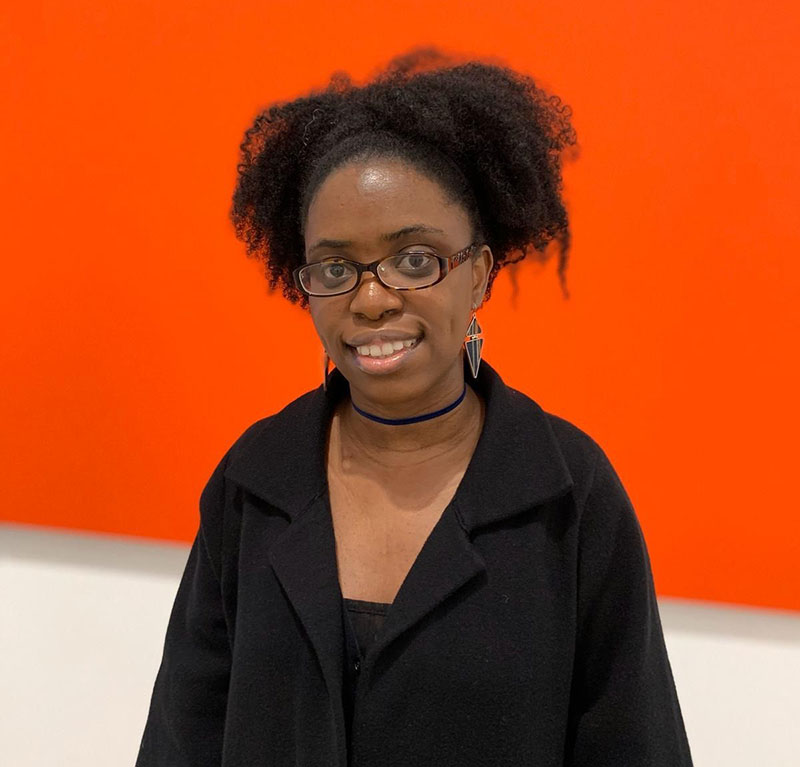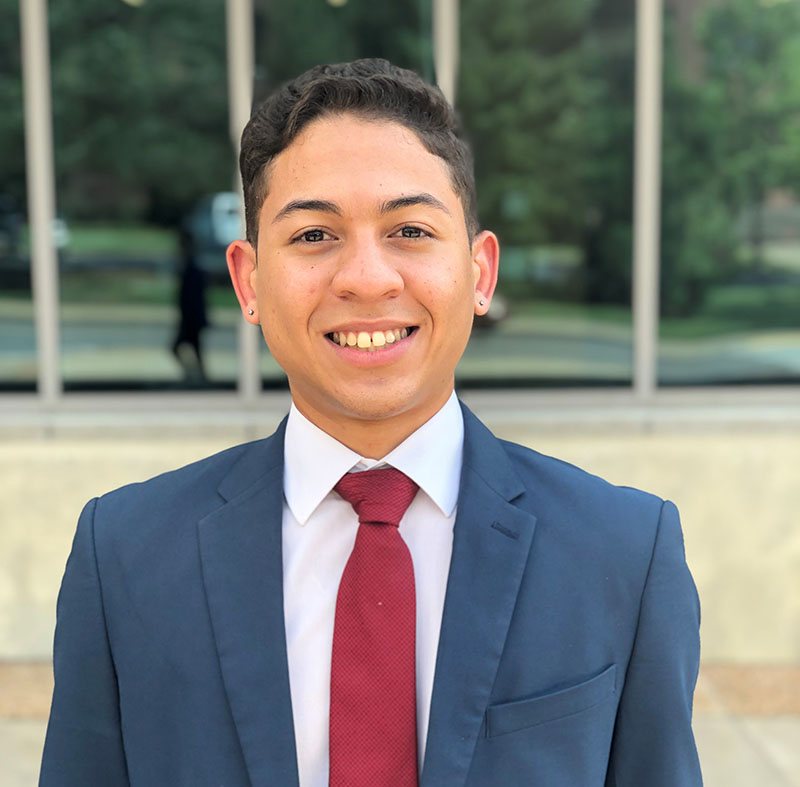How to fill the crucial need for more Black cardiologists
By Michael Merschel, American Heart Association News

Dontrez Johnson Jr. is a success story in the making. A first-generation college student, he earned a biology degree from Tennessee State University and is on a fellowship helping improve health in Marion, Alabama. His next stop: medical school and becoming a cardiologist.
He's inspired by his experience seeing relatives die after inadequate hospital care – and he's determined to show others that growing up poor and Black does not mean you can't achieve great things.
He's also a rarity in a field that needs a lot more people like him. And now, efforts like the mentoring program that supported Johnson along the way are working to take down barriers that historically have kept Black students from the entering the cardiology field.

Only 4% of cardiologists were Black women, according to a 2015 American College of Cardiology survey. Only 2% were Black men.
The stats on medical students in the pipeline don't look any rosier. Only 7.3% of students were Black this past academic year, according to the Association of American Medical Colleges.
That's a significant health care issue for Black Americans, who make up 13.4% of the population. One study estimated more Black doctors could reduce the gap in heart disease deaths between Black and white men by 19%. Black people have higher rates of high blood pressure and are more likely to die from heart disease than their white peers.
Recruiting doctors from rural or underserved communities also is important because they are more likely to return to that type of community, said Norma Poll-Hunter, the AAMC's senior director in diversity policy and programs.
Debora Kamin Mukaz, a postdoctoral associate at the University of Vermont, said having more Black doctors can help combat the distrust many Black people in the United States have toward the health care system, which has an ugly legacy of mistreating them. But the benefits also apply at the research level.
"Science is art," she said. "Science is creative work. We have ideas." And a scientist's background can inspire, motivate and shape the work he or she does.
But entrenched, systemic racism remains a key barrier to developing more physicians and researchers of color, Poll-Hunter said. She led a 2015 report on Black males in medicine that noted problems start well before medical school. People who are Black, Latino, American Indian or Alaska Native and communities living in poverty are more likely to attend schools that don't have enough resources or don't offer a rigorous science or math curriculum.
Kamin Mukaz, who grew up in the Democratic Republic of the Congo, has endured some of that structural racism. She is hoping to highlight the depth and breadth of what Black cardiologists can do by being part of #BlackInCardio week Oct. 19-25. The effort features the work of researchers and heart-health issues.

Kamin Mukaz, whose research examines racial disparities related to cardiovascular health, said schools need to formalize networks of mentors and supporters that create an environment for success.
"We are not asking them to baby their Black students," she said. "We're asking them to make it into a nurturing environment" that enables hard work in the academic setting. "Being nurturing is not opposite to being academically driven."
When a student makes it to graduate or medical school, "you are usually the trailblazer," Kamin Mukaz said. "You are usually the only one or one of the few. And these institutions are not necessarily equipped to deal with some of the issues that come with being the only one, even when you have very bright students."
Poll-Hunter said many universities have developed premedical programs that "have really made a significant difference in diversity of the applicant pool to medical school."
She noted the work of the Summer Health Professions Education Program, which exposes students to health careers early in college. Supported by the Robert Wood Johnson Foundation and administered by the AAMC, it's helped produce more than 8,000 physicians from diverse communities since 1989.
Students call the program "life-changing," Poll-Hunter said, and often say it was the first time they either saw a physician of color or someone to whom they could relate. "It was probably also the first time that someone ever told them they could actually do it – that they could be successful, and gave them the information to understand what those steps were to be successful and to get to the point of application and matriculation to medical school."
At Vanderbilt University in Nashville, Tennessee, professor of pharmacology Joey V. Barnett has spent years working on American Heart Association efforts focused on developing cardiologists and researchers from underrepresented groups, such as through a partnership with historically black colleges and universities, or HBCUs.
One effort is the Supporting Undergraduate Research Experience, or SURE, which pairs students with researchers at one of five participating medical schools for the summer. In addition to the scientific training, Barnett said, the goal is to send students a message that they have a place in the world of health and science.
"Not just, 'You're here as a visitor,'" he said, "but 'You're here because you belong here.'"
It's a message that worked on Hector Haddock-Martinez. He worked with Barnett in the summer of 2019 and came back as a mentor in 2020, when the program went virtual because of COVID-19.
Haddock-Martinez, who expects to graduate from the University of Puerto Rico this spring, has wanted to be a doctor since third grade. He began working in research labs when he was only 16. And his motivation to study cardiovascular and neurological health is personal: As a teenager, he found his grandmother after she had a stroke. She lived but has never been the same.
Even with so much pushing him forward, Haddock-Martinez – who identifies as neither Black nor white, just Puerto Rican – almost held himself back.

"Something that we hear a lot about in professional development workshops is impostor syndrome," he said. For example, "you might not even dare to apply for a certain medical program because you say, 'I don't belong there, that's not for me.'"
That's how it was when he arrived at Vanderbilt. "I remember feeling like the moment was too much for me," he said. "And that these people have made a mistake – I'm not supposed to be here."
But the program's leaders "helped me feel wanted and needed. And it's certainly done wonders for my confidence ever since."
Next fall, he aims to be in medical school, studying stroke medicine and embarking on a career as a physician-scientist.
Johnson, who met Barnett through the AHA's HBCU Scholars program, also plans to head to medical school after his fellowship. He said he's been helped by many people along the way, from the great-uncle who taught him the basics of research to the older HBCU Scholars who've mentored him.
"I want to give back to my community," he said. "I want to show little kids who look like me that I came from the same place that you are. I did this, I am doing this now, and I'm going to achieve this. And you can do it, too."
If you have questions or comments about this story, please email [email protected].





